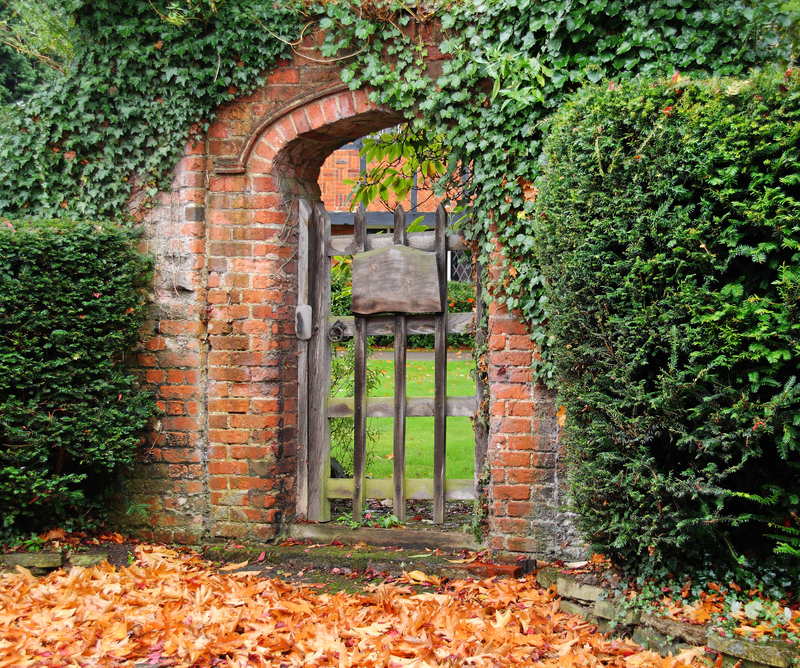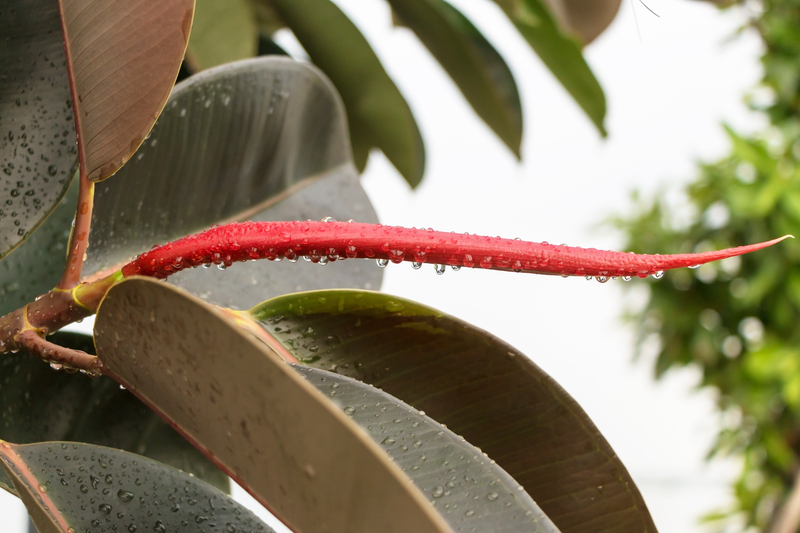Mastering the Art of Herb Gardening at Home
Posted on 10/06/2025
Mastering the Art of Herb Gardening at Home: A Comprehensive Guide
Are you eager to bring a touch of nature into your living space while elevating your culinary and wellness experience? Mastering the art of herb gardening at home is not only rewarding but also an accessible and practical hobby for anyone. Whether you're an aspiring chef, a home remedy enthusiast, or simply seeking a beautiful fragrance in your home, cultivating herbs can provide fresh flavors, soothing scents, and even natural remedies at your fingertips. In this in-depth guide, we'll explore techniques and tips to help you become an expert in home herb gardening.

Table of Contents
- The Benefits of Home Herb Gardening
- Choosing the Right Herbs for Your Home Garden
- Planning Your Herb Garden Space
- Proven Planting Techniques for Indoor Herb Gardens
- Caring for Your Homegrown Herbs
- Harvesting and Storing Your Herbs
- Troubleshooting Common Herb Gardening Problems
- Creative Ways to Use Your Homegrown Herbs
- Expert Tips to Master Herb Gardening at Home
- Frequently Asked Questions About Home Herb Gardening
The Benefits of Home Herb Gardening
Cultivating your own herbs at home offers a multitude of advantages beyond just enhancing dishes. Here's what makes herb gardening at home a valuable pursuit:
- Cost Efficiency: Growing your own herbs often saves money compared to buying fresh or dried from stores.
- Freshness & Flavor: Homegrown herbs deliver unbeatable aroma and taste, straight from garden to plate.
- Health Benefits: Herbs like basil, mint, and parsley are rich in antioxidants, vitamins, and essential oils.
- Environmental Impact: Reduce packaging waste and the carbon footprint associated with store-bought produce.
- Therapeutic Value: Gardening is known to reduce stress, boost mood, and contribute to overall wellbeing.
- Decorative Appeal: Herb gardens can beautify your home, patio, or window ledge, bringing life and color indoors.
Choosing the Right Herbs for Your Home Garden
When starting an indoor herb garden, it's crucial to pick the right herbs based on your climate, space, and personal preferences. Some popular choices for homegrown herb gardens include:
- Basil: Ideal for Mediterranean dishes, easy to grow indoors.
- Mint: Vigorous and refreshing, perfect for teas and cocktails.
- Parsley: Versatile for garnishes, salads, and soups.
- Chives: Mild onion flavor suitable for eggs, dips, and salads.
- Cilantro: Essential for salsa, guacamole, and Asian cuisine.
- Rosemary: Hardy and aromatic, excellent for roasting meats and vegetables.
- Thyme: Complements soups, stews, and roasts.
- Oregano: A staple for Italian cooking and pizza.
Pro Tip: Start with 3-5 of your favorites before expanding as your confidence grows. Consider your available light, as some herbs thrive with more sunshine, while others tolerate shade.
Planning Your Herb Garden Space
Location is everything! Whether you're growing herbs on a sunny windowsill, a balcony, or a dedicated indoor shelf, a little planning can set you up for success. Here are factors to evaluate:
- Light: Most herbs require 6-8 hours of indirect sunlight daily. South or west-facing windows are best.
- Air Circulation: Ensure good airflow to prevent mildew or pests.
- Humidity & Temperature: Keep herbs away from radiators, air conditioners, and drafts. Most prefer temperatures between 65-75?F (18-24?C).
- Accessibility: Keep herbs close to the kitchen for convenience and safety (reduce trips while cooking).
- Containers: Use pots with drainage holes. Terra cotta, ceramic, or recycled containers can all work well.
Remember: Group similar herbs together for convenience, but avoid overcrowding to ensure good growth.
Proven Planting Techniques for Indoor Herb Gardens
Whether you're a beginner or a seasoned gardener, understanding the best ways to plant your herbs is essential for mastering herb gardening at home.
Sowing Seeds vs. Buying Seedlings
- Sowing Seeds: Offers variety and affordability. Start with quality potting mix. Sow seeds shallowly and gently mist until germinated.
- Buying Seedlings: Faster results! Transplant healthy, green nursery plants into your pot using fresh soil.
Soil and Potting Mix
Use a lightweight, well-draining organic potting mix. Avoid garden soil, which can be too heavy or contain pests.
Potting and Spacing
- Allow enough space for each herb's root system beneath the soil.
- Keep taller herbs towards the back, shorter ones in the front if combining in one container.
- Use mulch or pebbles to retain moisture and reduce weeds.
Watering Wisdom
- Most herbs dislike "wet feet" - water only when the top inch of soil is dry.
- Use room-temperature water and ensure excess moisture can drain away easily.
- Avoid overwatering, which is the number one cause of failure in home herb gardens!
Insider insight: Self-watering pots, hydroponics, and vertical gardens are trendy options for those who want to maximize indoor space.
Caring for Your Homegrown Herbs
Fertilizing Your Herbs
While herbs generally don't require much feeding, monthly application of an organic liquid fertilizer can encourage lush, healthy growth. Over-fertilizing can lead to weak flavors - aim for balance.
Pruning and Pinching
- Regular harvesting encourages branching and fuller plants.
- Pinch back stems above a leaf node every few weeks.
- Remove flower buds to extend leaf production unless you want seeds.
Pest and Disease Prevention
- Herbs are naturally pest-resistant, but keep an eye out for aphids and spider mites.
- Inspect leaves weekly. Rinse or wipe off pests with soapy water if detected early.
- Good air circulation and not overwatering help avoid diseases like powdery mildew.
Quick Tip: Use companion planting by placing herbs like basil near tomatoes to deter pests naturally.
Harvesting and Storing Your Herbs
Knowing when and how to harvest your herbs is part of the art of home gardening.
- Start harvesting once plants are established and have at least 6 inches of growth.
- Always use sharp, clean scissors to avoid damaging stems.
- Harvest herbs in the morning when essential oils are at their peak.
Drying and Storage Methods
Preserve surplus herbs for later use with these methods:
- Air Drying: Tie stems in small bundles and hang upside down in a cool, dry place.
- Oven or Dehydrator: Spread herbs evenly and dry at low heat.
- Freezing: Chop herbs and freeze in ice cube trays with a little water or oil.
- Infusions: Store herbs in vinegar, oil, or honey to preserve flavor.
Label jars or bags clearly, and store in a dark cupboard for long-lasting freshness.
Troubleshooting Common Herb Gardening Problems
Every gardener encounters challenges. Here are solutions to frequent issues when growing herbs at home:
- Yellow leaves: Usually overwatering--let the soil dry out more between waterings.
- Leggy growth: Not enough light--move plants to a sunnier spot or use grow lights.
- Slow growth: Soil may be depleted--try a light feeding with organic fertilizer.
- Rotting stems/base: Poor drainage--always use pots with holes and avoid letting pots sit in water.
- Insect infestations: Rinse plants or treat gently with neem oil or insecticidal soap.
Consistent observation and quick action prevent small issues from turning into big problems!
Creative Ways to Use Your Homegrown Herbs
Once you've mastered home herb cultivation, the possibilities are endless! Explore these ideas:
- Culinary: Fresh pestos, infused oils, herbal butters, garnishes, teas, and cocktails.
- Wellness: Lavender sachets for relaxation, mint foot soaks, homemade ointments.
- Aromatherapy: Diffuse rosemary or basil for focus, or lemon balm for calming effects.
- Home decor: Create wreaths, bouquets, or potted displays for your kitchen or dining table.
Experiment, have fun, and let your creativity blossom as abundantly as your garden!
Expert Tips to Master Herb Gardening at Home
- Rotate Herbs: Occasionally rotate potted herbs to ensure even light exposure and avoid leaning plants.
- Hydrate Smartly: Group herbs with similar water needs together.
- Repot Regularly: As herbs grow, gently transfer them into larger containers for healthier root development.
- Stay Inspired: Follow gardening blogs, join local gardening groups, or try new herb varieties each season.
Advanced gardeners might explore hydroponic systems, vertical planters, or DIY self-watering pots to take their at-home herb garden to the next level.
Frequently Asked Questions About Home Herb Gardening
Can herbs be grown year-round indoors?
Yes! Most herbs thrive indoors with the right light, warmth, and occasional feeding, allowing for year-round harvesting.
Do herbs need direct sunlight?
While most herbs prefer bright, indirect sunlight, some (like rosemary and basil) do best with several hours of direct sun, while others (like mint and chives) tolerate partial shade.
Is it possible to propagate herbs from cuttings?
Absolutely! Many herbs like mint, basil, and oregano can be grown from stem cuttings. Simply snip a healthy shoot, place it in water until roots appear, then transplant into soil.
How can I prevent herbs from becoming woody or bitter?
Regular harvesting and pinching back keep plants lush and flavorful. Avoid letting herbs "bolt" (flower), as this often changes the flavor and texture.
What are the easiest herbs for beginners to grow at home?
Basil, mint, parsley, and chives are forgiving, fast-growing herbs ideal for beginners learning the art of herb gardening at home.

Conclusion: Embrace the Joy of Home Herb Gardening
Herb gardening at home is a journey as much as a destination. With just a pinch of patience, a dash of creativity, and a sprinkle of care, you'll cultivate more than just fresh flavors; you'll nurture a rewarding life skill that enhances your kitchen, wellbeing, and connection with nature. Whether your goal is to save money, elevate home-cooked meals, or simply add a luscious green accent to your space, mastering the art of herb gardening at home is within reach for everyone. So, roll up your sleeves, gather your pots and seeds, and let your herb gardening adventure flourish!
Ready to start your own home herb garden? Share your progress, ask questions, or connect with fellow enthusiasts--your journey to gardening mastery awaits!

